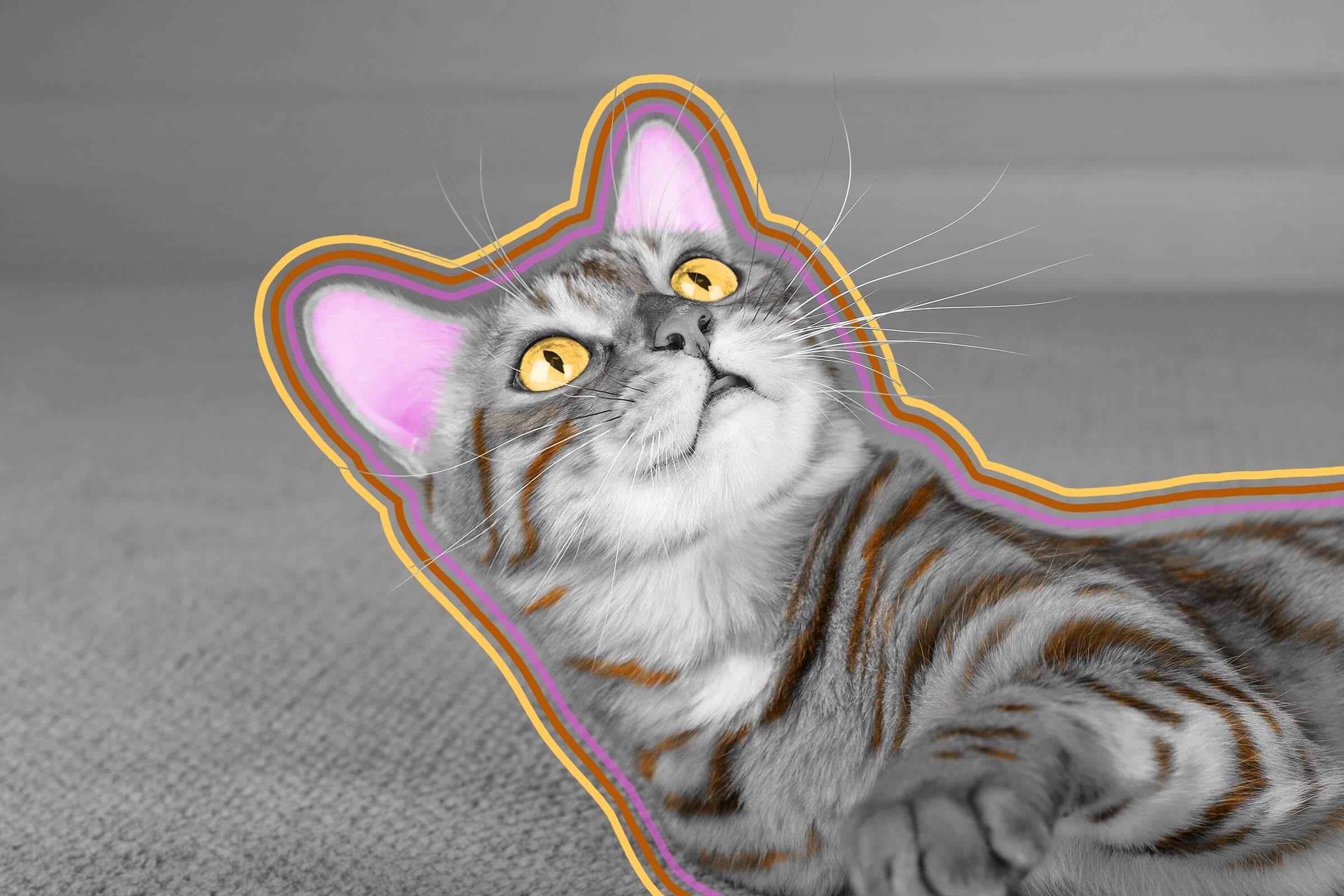What can cats see that humans can't?
Cats can see UV light, which is invisible to humans.
Cats can do a lot of things their human friends can’t: They can purr, sleep all day without consequence, and jump up to six times their own height in a single leap. But perhaps most impressive of all is their ability to see ultraviolet light thanks to UV-transparent lenses in their eyes that allow UV light to reach their retinas. This will come as little surprise to anyone who’s ever noticed their cat staring at seemingly nothing for minutes at a time, but it’s a fascinating insight into how our feline friends view the world all the same. In fact, their UV vision actually allows them to see their prey’s urine trail while hunting and distinguish between their prey and a similarly colored background.
This ability may not help your housecat in any practical ways on a daily basis, as being fed from a can doesn’t require much in the way of hunting, but it’s still a cool evolutionary trick. And cats aren’t the only animals with this ability. Bees, birds, reindeer, and mice have this enhanced vision as well, though for some of them it comes with the trade-off of not being able to see the color red.
Humans have kept cats as pets for at least 9,500 years.
When we think of cats in the ancient world, Egypt tends to come to mind first. Egyptians considered felines sacred and some even mummified their pets, but they weren’t the first to hold cats in such high regard. There’s evidence to suggest they were beaten to the punch by at least 4,000 years: A grave in Cyprus dating back some 9,500 years contained the remains of a human and cat alongside decorative objects such as seashells and polished stones. Cats aren’t native to the island, meaning they must have been brought there by humans — perhaps “on a kind of Noah’s ark,” as archaeologist Melinda Zeder told National Geographic, theorizing that a number of non-native animals were transported to Cyprus.
#Animals #Cats
Cats can see UV light, which is invisible to humans.
Cats can do a lot of things their human friends can’t: They can purr, sleep all day without consequence, and jump up to six times their own height in a single leap. But perhaps most impressive of all is their ability to see ultraviolet light thanks to UV-transparent lenses in their eyes that allow UV light to reach their retinas. This will come as little surprise to anyone who’s ever noticed their cat staring at seemingly nothing for minutes at a time, but it’s a fascinating insight into how our feline friends view the world all the same. In fact, their UV vision actually allows them to see their prey’s urine trail while hunting and distinguish between their prey and a similarly colored background.
This ability may not help your housecat in any practical ways on a daily basis, as being fed from a can doesn’t require much in the way of hunting, but it’s still a cool evolutionary trick. And cats aren’t the only animals with this ability. Bees, birds, reindeer, and mice have this enhanced vision as well, though for some of them it comes with the trade-off of not being able to see the color red.
Humans have kept cats as pets for at least 9,500 years.
When we think of cats in the ancient world, Egypt tends to come to mind first. Egyptians considered felines sacred and some even mummified their pets, but they weren’t the first to hold cats in such high regard. There’s evidence to suggest they were beaten to the punch by at least 4,000 years: A grave in Cyprus dating back some 9,500 years contained the remains of a human and cat alongside decorative objects such as seashells and polished stones. Cats aren’t native to the island, meaning they must have been brought there by humans — perhaps “on a kind of Noah’s ark,” as archaeologist Melinda Zeder told National Geographic, theorizing that a number of non-native animals were transported to Cyprus.
#Animals #Cats
What can cats see that humans can't? 🐱
Cats can see UV light, which is invisible to humans.
Cats can do a lot of things their human friends can’t: They can purr, sleep all day without consequence, and jump up to six times their own height in a single leap. But perhaps most impressive of all is their ability to see ultraviolet light thanks to UV-transparent lenses in their eyes that allow UV light to reach their retinas. This will come as little surprise to anyone who’s ever noticed their cat staring at seemingly nothing for minutes at a time, but it’s a fascinating insight into how our feline friends view the world all the same. In fact, their UV vision actually allows them to see their prey’s urine trail while hunting and distinguish between their prey and a similarly colored background.
This ability may not help your housecat in any practical ways on a daily basis, as being fed from a can doesn’t require much in the way of hunting, but it’s still a cool evolutionary trick. And cats aren’t the only animals with this ability. Bees, birds, reindeer, and mice have this enhanced vision as well, though for some of them it comes with the trade-off of not being able to see the color red.
Humans have kept cats as pets for at least 9,500 years.
When we think of cats in the ancient world, Egypt tends to come to mind first. Egyptians considered felines sacred and some even mummified their pets, but they weren’t the first to hold cats in such high regard. There’s evidence to suggest they were beaten to the punch by at least 4,000 years: A grave in Cyprus dating back some 9,500 years contained the remains of a human and cat alongside decorative objects such as seashells and polished stones. Cats aren’t native to the island, meaning they must have been brought there by humans — perhaps “on a kind of Noah’s ark,” as archaeologist Melinda Zeder told National Geographic, theorizing that a number of non-native animals were transported to Cyprus.
#Animals #Cats
0 Комментарии
0 Поделились
11879 Просмотры








